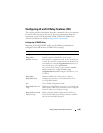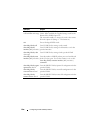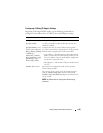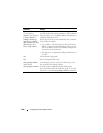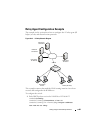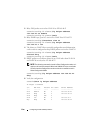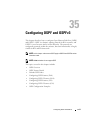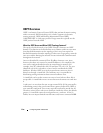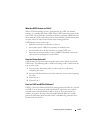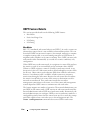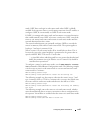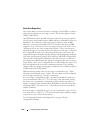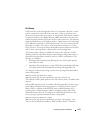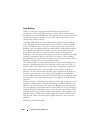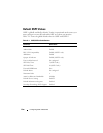
Configuring OSPF and OSPFv3 1113
What Are OSPF Routers and LSAs?
When a Dell Networking switch is configured to use OSPF for dynamic
routing, it is considered to be an OSPF router. OSPF routers keep track of the
state of the various links they send data to. Routers exchange OSPF link state
advertisements (LSAs) with other routers. External LSAs provide information
on static routes or routes learned from other routing protocols.
OSPF defines various router types:
• Backbone routers have an interface in Area 0.
• Area border routers (ABRs) have interfaces in multiple areas.
• Internal routers have all their interfaces in a single OSPF area.
• Autonomous system boundary routers (ASBRs) redistribute routes from
other protocols and originate external LSAs.
How Are Routes Selected?
OSPF determines the best route using the route metric and the type of the
OSPF route. The following order is used for choosing a route if more than one
type of route exists:
1
Intra-area (the destination prefix is in the same area as the router
computing the route)
2
Inter-area (the destination is not in the same area as the router computing
the route
3
External Type 1
4
External Type 2
How Are OSPF and OSPFv3 Different?
OSPFv3 is the Open Shortest Path First routing protocol for IPv6. It is similar
to OSPFv2 in its concept of a link state database, intra/inter area, and AS
external routes and virtual links. It differs from its IPv4 counterpart in a
number of respects. Peering is done through link-local addresses, and the
protocol is link rather than network centric; and addressing semantics have
been moved to leaf LSAs.



